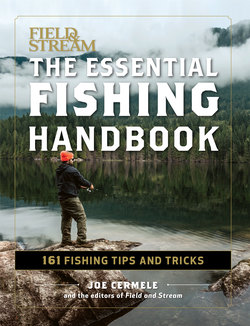Читать книгу The Essential Fishing Handbook - Joe Cermele - Страница 32
На сайте Литреса книга снята с продажи.
Оглавление16
Tie a
Palomar Knot
15
Lead
the Way
In most circumstances, clear fluorocarbon line is less visible to fish than nylon monofilament of the same size. (It is not completely invisible underwater despite what you might have heard.) If you’re after leader-shy fish such as winter steelhead in low, clear water or sharp-eyed false albacore in the salt, using fluorocarbon line makes perfect sense. Some kind of low-visibility fluorocarbon leader is also a good idea for trout, bass, and other fish made wary by fishing pressure. Abrasion resistance is also a huge plus. When these lines get nicked or scratched from being dragged across structure by a heavy fish, they are much less likely to break than comparable nylons. You have lots of knot options for making
leaders. I usually use a four-turn surgeon’s knot to attach a fluorocarbon fly-fishing tippet, for example, and back-to-back Uni knots with heavier lines.
This is the most widely useful—and the easiest “to tie—of all terminal knots that you’ll see used in freshwater and inshore saltwater fishing. It works well with both nylon monofilaments and superbraids, and will soon be your new best friend in the knot world.
STEP 1 Extend about 6 inches ( cm) of doubled line through the eye of the hook or lure.
STEP 2 Tie a loose overhand knot using the doubled line on either side of the eye. The hook itself will hang from the middle of the knot.
STEP 3 Pass the loop over the hook. Wet the knot with saliva and then pull on the doubled line (but not the loop) to tighten. Trim closely.
1
2
3
